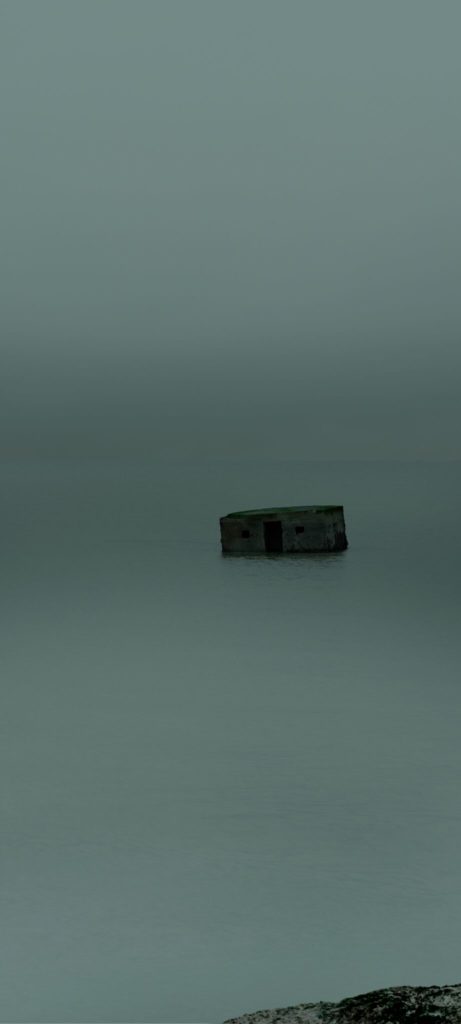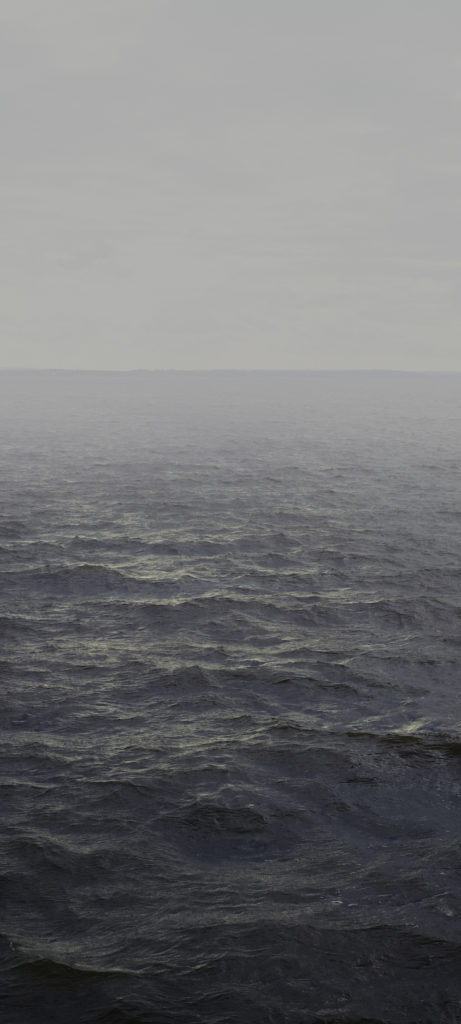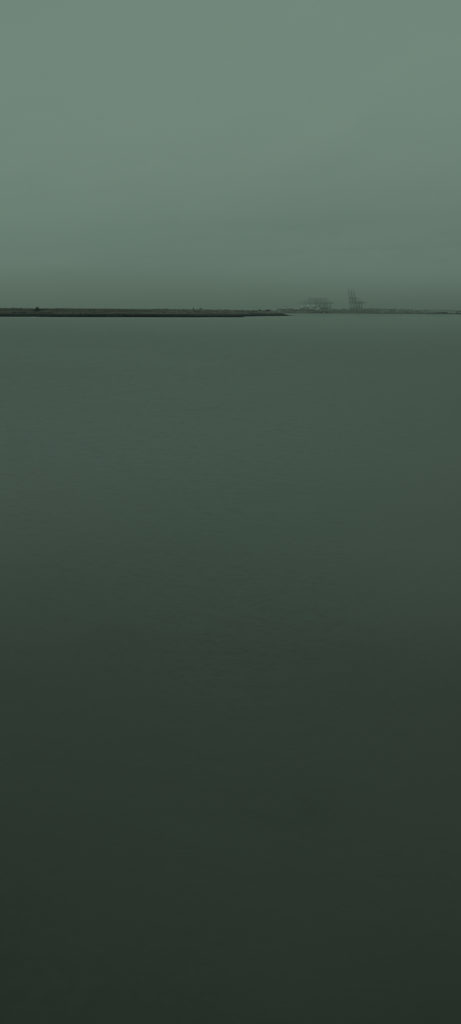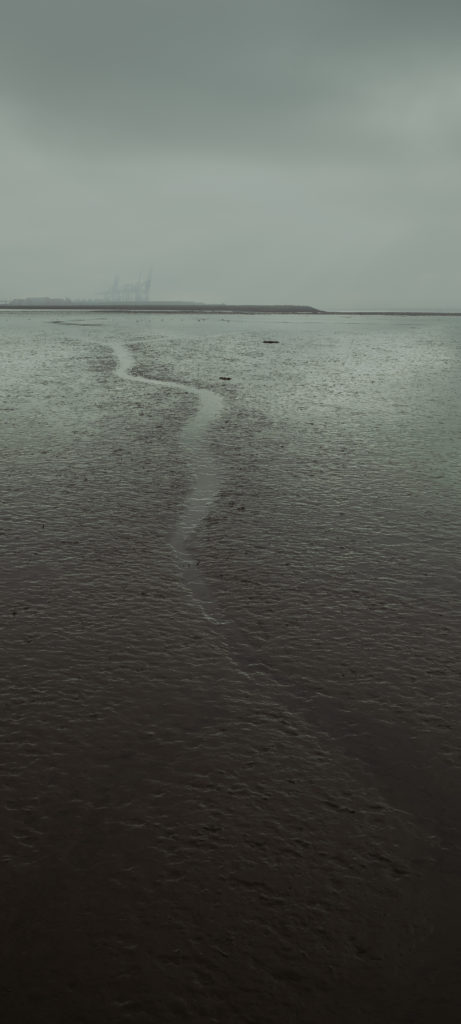Port speaks to photographer Nadav Kander about his latest exhibition, exploring the desolate and moving landscapes of the Thames Estuary

My grandmother would tell me stories of how, as a child, she watched the great cargo ships pass along the Thames at Greenwich, having crossed hundred of miles from all corners of the Empire to find their berth in London. To visit the same spot today is to see a completely different river, a strangely empty space in the centre of an ever growing, ever more bustling city, the river now only populated by the occasional river bus, unable to accommodate the vast modern ships and their demand for deep water ports.
Downstream, past Tilbury and Gravesend – once gateposts to the city, now quietening county towns – the river widens and stretches out to the sea. As in the city, the traffic from what was once the busiest shipping lane in the world has all but disappeared, but here the level, featureless marshland and mud flats lining the Thames are only inhabited by dormant industry and crumbling Victorian forts. This is where, in the fog and half-light, the photographer Nadav Kander has been working intermittently since the Summer of 2015.

Over his now long and celebrated career, Kander has gained much recognition for his portraiture, such as for his subversive image of the then president-elect Donald Trump for the TIME Magazine’s Person of the Year cover in 2016. Formally uncluttered and sensitively lit, Kander’s portraits of actors and architects, artists and politicians are at once instantly familiar and completely alien, the sitters arrestingly meditative and still, dislocated from the cluttered circus of public life. It is this sense of meditation, of stillness and ultimately of time, that plays an essential part in Kander’s latest series, Dark Line – The Thames Estuary, currently exhibited at Flowers Gallery in east London
“The Estuary has always been a mystical place for me,” Kander tells me on the phone from his studio in London, the day after the exhibition’s opening. “It’s such a bleak and interesting place. There’s a sense of the history there that sits on your shoulder when you make a work like this, a sense of Man’s grit and toil, the loss of love and life, and everything that was once so rich in that river.”

Indeed, while Kander’s atmospheric, gloomy images are unpopulated – human activity only hinted at through an abandoned, half-flooded pill box or the shadow of heavy industry on the horizon – this is a series that is centred on humanity and its relationship with its environment. The Thames, once the central artery of London, connecting the city to the world, host to Romans, Vikings and ships from ever further reaches of the globe, has only recently fallen quiet – it is this eerie and uncanny emptiness captured by Kander that is so compelling.
The exhibition also features a film, presented in the same elongated portrait format as the photographs (inspired by Chinese scroll paintings), that shows Kander lying in water from the Estuary, alternately rising above and descending beneath the surface. Set to a gently throbbing music by the German-British composer Max Richter, the film develops the artistic themes of the photographic work, evoking the tide and the cycles of life that predate the use of the Thames by humans, and that will continue long after it.

Dark Line forms part of a wider body of work concerned with water that began artistically with his series on the Yangtze river in China, which received the Prix Pictet prize in 2009, though Kander traces his fascination with water to an experience he had as a child. “When I was six years old I got my first pair of goggles and went swimming. When I turned away from the shore, to see the sand sloping away into blackness, I was terrified,” he remembers. “I ran straight out of the water. I had recurring dreams about that well into my 30s, but it was not so much a fear of the water but a human condition to fear the unknown.”
This – our very human, very primal response to large bodies of water – is the wider and more instinctive attraction of Dark Line. There is a sense of the infinite, both in the endless horizons and in the unceasing, slow moving water which, as Kander says, can inspire fear and melancholy as much as it can a sense of beauty and destiny. “Ultimately it’s much less a documentary work about the Thames Estuary and more a fantastic metaphor for ending and widening and renewal,” he explains. “I think it was T.S. Eliot who wrote, ‘In my end is my beginning.’”

I ask Kander how he plans to continue to develop his fascination with water, but he cuts me short. “I don’t feel my work with the Thames Estuary is finished yet. Being so connected to London, there’s something personal to me in this project. I definitely want to stay here, for now anyway.”
Dark Line – The Thames Estuary runs at Flowers Gallery at 82 Kingsland Road, London, E2 8DP until 13th January 2018.